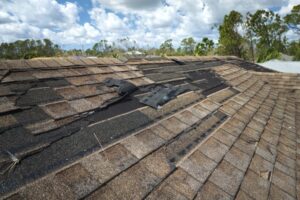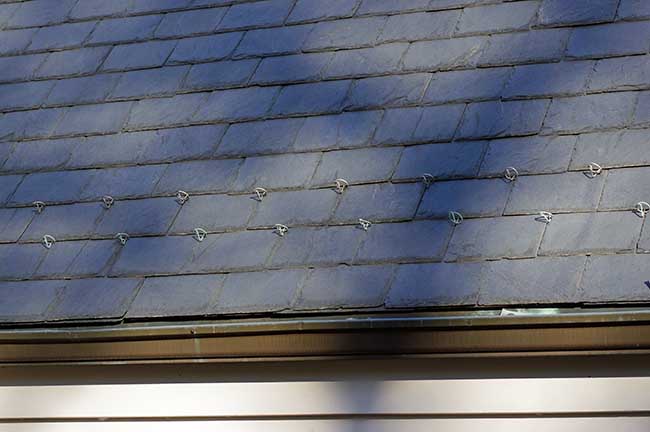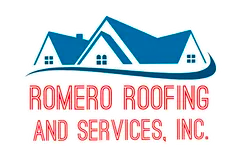Romero Roofing Blog
The Lifespan of Different Roofing Materials: What to Expect and When to Replace
A roof is one of the most critical components of a home, offering protection from the elements and contributing to its structural integrity. However, like all parts of a home, roofs have a finite lifespan and will eventually need to be repaired or replaced. Understanding the typical lifespan of various roofing materials and knowing the signs of aging can help you make informed decisions about when to replace your roof, ensuring optimal home protection.
In this blog post, we’ll explore the typical lifespan of common roofing materials, including asphalt shingles, metal, slate, and tile, as well as offer guidance on recognizing when it’s time to consider a replacement.
Asphalt Shingles: Affordable but Limited Lifespan
Asphalt shingles are the most popular roofing material in the United States, largely due to their affordability, ease of installation, and variety of colors and styles. There are two primary types of asphalt shingles: 3-tab shingles and architectural (dimensional) shingles, with each offering a slightly different lifespan.
3-Tab Asphalt Shingles:
The more basic option, 3-tab shingles, typically have a lifespan of 15 to 20 years. These shingles are flat and uniform in appearance, making them a budget-friendly option for homeowners. However, they are also less durable than their architectural counterparts and more susceptible to damage from wind, hail, and heavy rain.Architectural Asphalt Shingles:
Architectural shingles, also known as dimensional or laminate shingles, are thicker and more durable than 3-tab shingles. They are designed with multiple layers to provide a more textured and aesthetically pleasing look. Architectural shingles generally have a longer lifespan, lasting 20 to 30 years or more with proper maintenance. Their additional thickness makes them more resistant to the elements, increasing their longevity.
If your asphalt roof is nearing the 15-20 year mark (for 3-tab shingles) or 20-30 years (for architectural shingles), it’s time to have it inspected by a professional to assess its condition.

Signs of Aging and When to Replace Asphalt Shingles: Common signs that your asphalt shingle roof is aging and may need replacement include:
- Curling or buckling shingles: Shingles that curl at the edges or appear warped are a clear sign of wear and tear.
- Granule loss: If you notice granules accumulating in your gutters or downspouts, this indicates that the protective layer on your shingles is deteriorating.
- Missing shingles: A roof with multiple missing shingles is more vulnerable to leaks and damage from the elements.
- Frequent leaks: Recurring leaks or water stains inside your home are signs that the shingles may no longer be providing adequate protection.
Metal Roofing: Longevity with Energy Efficiency
Metal roofing is an increasingly popular choice for homeowners seeking a long-lasting and energy-efficient option. While the upfront cost of metal roofing is higher than asphalt shingles, its durability and lifespan often make it a worthwhile investment.
Lifespan:
Metal roofing can last between 40 to 70 years, depending on the type of metal used (such as aluminum, steel, or copper) and the quality of the installation. This impressive lifespan makes metal roofing a great choice for homeowners who want a long-term solution with minimal maintenance.Energy Efficiency:
In addition to its durability, metal roofing offers excellent energy efficiency. Its reflective properties help reduce heat absorption, keeping homes cooler in hot climates like Chattanooga and lowering energy bills.
Signs of Aging and When to Replace Metal Roofing: Although metal roofs are extremely durable, they are not immune to wear and tear. Signs that your metal roof may need attention include:
- Rust or corrosion: While most modern metal roofs are treated to prevent rust, prolonged exposure to moisture and salt in the air can lead to corrosion, especially in coastal areas.
- Loose or damaged panels: Over time, weather conditions may cause metal panels to become loose or dented. Loose panels can lead to water infiltration and should be addressed immediately.
- Fading or chalking: While not a structural issue, fading or chalking (the formation of a white residue on the surface) may indicate that the protective coating on the metal is wearing off. This can affect the roof’s appearance and may reduce its energy efficiency.
With proper care and maintenance, a metal roof can last for several decades. However, if your metal roof is showing signs of corrosion or damage, it’s important to have it inspected and repaired promptly to extend its lifespan.

Romero Roofing & Exteriors, Inc.
Romero Roofing was wonderful to work with. They came out promptly after we called for a quote, and once we pulled the trigger, they finished the job in a day. Quick, efficient, and awesome work. John is great – he communicated with me throughout the process to make sure I was always in the loop. Can’t recommend them enough!
-Jessica M.

Slate Roofing: The Ultimate in Durability
Slate roofing is one of the most durable and long-lasting roofing materials available, often considered the “gold standard” of roofing. Made from natural stone, slate is renowned for its strength, beauty, and ability to withstand harsh weather conditions.
Lifespan:
A well-maintained slate roof can last anywhere from 75 to 100 years or more, making it an excellent choice for homeowners looking for a roofing solution that can last a lifetime—or even multiple generations.Aesthetics:
Slate is often chosen for its elegant, timeless appearance. It’s available in various colors and thicknesses, allowing homeowners to customize the look of their roof to complement their home’s architecture.
Signs of Aging and When to Replace Slate Roofing: While slate is incredibly durable, it’s still essential to monitor the condition of your roof over time. Signs that your slate roof may need repair or replacement include:
- Broken or missing tiles: Slate tiles are heavy and can crack or become dislodged due to severe weather or improper installation. It’s important to address any missing or damaged tiles promptly to prevent water infiltration.
- Delamination: Over time, slate tiles may begin to split or “delaminate,” particularly if they are exposed to prolonged moisture. This is a sign that the tiles are nearing the end of their lifespan.
- Sagging roofline: A sagging roofline may indicate that the roof’s support structure is compromised, possibly due to the weight of the slate or underlying issues. This requires immediate professional attention.
Because of slate’s long lifespan, replacing individual tiles is often more practical than replacing the entire roof. However, if widespread damage occurs, a full roof replacement may be necessary.
Tile Roofing: Longevity with a Classic Look
Tile roofing, often made from clay or concrete, is a popular option for homeowners seeking a classic, Mediterranean-inspired aesthetic. Tile roofs are known for their longevity, durability, and ability to withstand various weather conditions.
Lifespan:
Clay and concrete tile roofs can last between 50 to 100 years, depending on the quality of the installation and the local climate. Like slate, tile roofs are heavy and require a strong support structure to ensure longevity.Fire Resistance:
One of the standout features of tile roofing is its natural fire resistance. This can provide additional peace of mind for homeowners in areas prone to wildfires or lightning strikes.
Signs of Aging and When to Replace Tile Roofing: Tile roofing is generally low-maintenance, but it’s still important to be aware of potential issues that can arise over time:
- Cracked or broken tiles: Individual tiles may crack or break due to impact from falling debris or extreme weather. Replacing damaged tiles promptly can help extend the roof’s overall lifespan.
- Water leaks: Although tiles themselves are water-resistant, the underlayment beneath the tiles can deteriorate over time. If you notice water leaks or moisture buildup, it may be time to replace the underlayment or repair the roof.
- Moss or algae growth: In humid climates, moss or algae can grow on the surface of tile roofs. While this doesn’t usually affect the roof’s structural integrity, it can detract from its appearance and may require cleaning or treatment.
Because tile roofs can last for several decades, regular inspections and minor repairs are often enough to keep them in good condition. However, if the roof’s underlayment is compromised, a more extensive replacement may be required.
When to Replace Your Roof
Knowing the typical lifespan of various roofing materials and recognizing the signs of aging can help you plan for roof maintenance and replacement. Whether you have an asphalt shingle roof that’s nearing the end of its 20-year lifespan or a slate roof that’s still going strong after 75 years, keeping an eye on your roof’s condition is essential to protecting your home.
At Romero Roofing and Exteriors, Inc., we recommend regular roof inspections—especially after severe weather events—so you can catch any potential issues early. If your roof is showing signs of wear and tear or nearing the end of its expected lifespan, it’s time to consider a replacement to ensure your home remains safe, energy-efficient, and protected from the elements for years to come.


